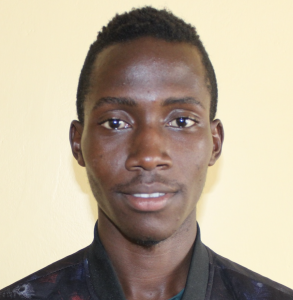Hamutua Primary School is busy, with 747 students and 21 teachers moving about every day. Such a large number of students on the campus also means that the water demand for drinking, cooking, and cleaning can be overwhelming, especially without their own source of water.
Currently, there are only two choices to meet the school's water needs. Rainwater can be collected from a stream 3 km (nearly two miles) away but only during the limited rainy season (usually three months a year). Or water from a hand-dug shallow well located at the home of a community member, Mama Irene. Everyone is grateful for her willingness to share the water, but it comes with challenges.
The water is unsafe for drinking because of contamination from surface runoff, including dirt, trash, and animal feces. Students regularly suffer from water-related illnesses like typhoid and diarrhea, which keep them out of school and cost their families money to treat.
To get to the waterpoint, pupils risk serious injury as they walk alongside a dangerous, busy road used by motorbikes and tractors to transport sugarcane and maize. Once they arrive, the well is usually very busy because community members also rely on it for their water. Often students get pushed aside and told to wait, which causes arguments that end with the school administration disciplining them.
All these factors mean students like Mary I., 13, miss valuable learning time. "Going to the well is usually a task. You have to ask for the teachers to accompany you or you might not be allowed to fetch water. The well is also a bit far, and sometimes the teacher might start teaching while I am still out getting water which makes it difficult to catch up on some topics like science and maths."
Head Teacher Alfayo Chilali, 45, shared his concerns, "I have barely been here long enough, but I have noticed that the well is a big hazard to my students and also a point of quarrels between the community and the school. I have had to deal with motorbike riders who almost knocked down my students on this road. And with some community members chasing students from the waterpoint to [not] be allowed to fetch water. Also, many cases of stomach upset, diarrhea, and typhoid from the water. The surface water (rainwater) helps as it is easily accessible, but with the current sunny (dry) season, there is none of that."
Hamutua needs its own clean, accessible water source on its campus so students can get back to learning and not have to risk their safety or their education every day.
What We Can Do:
Two Rain Tanks
Two 75,000-liter rainwater catchment tanks will help alleviate the water crisis at this school. The school will help collect the needed construction materials such as sand, bricks, rocks, and water for mixing cement. We will complement their materials by providing an expert team of artisans, tools, hardware, and the guttering system. Once finished, these tanks will begin catching rainfall that will be used by the school's students and staff for drinking, handwashing, cooking, cleaning, and much more.
We and the school strongly believe that all of these components will work together to improve standards at this school, which will lead to better student academic performance and help to unlock the potential for these students to live better, healthier lives.
Handwashing Stations
The student health club will oversee the two new handwashing stations we will provide, and make sure they are kept clean and in working condition. The club leaders will fill the handwashing stations with water daily and make sure they are always supplied with a cleaning agent such as soap or ash.
VIP Latrines
Two triple-door latrine blocks will be constructed with local materials that the school will help gather—one block for girls and one for boys. All of these new latrines will have cement floors that are designed to be easy to use and clean. And with two rain tanks right on school property, there should be enough water to keep them clean.
Training on Health, Hygiene, COVID-19, and More
We will hold a one-day intensive training session with students and teachers. This training will cover a wide range of topics including: COVID-19 symptoms, transmission routes, and prevention; personal and environmental hygiene; and the operation and maintenance of the rain tanks, latrines, and handwashing stations. There will be a special emphasis on handwashing.
Our team of facilitators will use a variety of methods to train, including participatory hygiene and sanitation transformation, and asset-based community development. We will initiate a student health club, which will prepare students to lead other pupils into healthy habits at school and at home. We will also lead lectures, group discussions, and provide illustrative handouts to teach health topics and ways to promote good hygiene practices within the school, like handwashing and water treatment. We will then conduct a series of follow-up trainings before transitioning to our regularly scheduled support visits throughout the year.

 Rainwater Catchment
Rainwater Catchment
 Rehabilitation Project
Rehabilitation Project













































